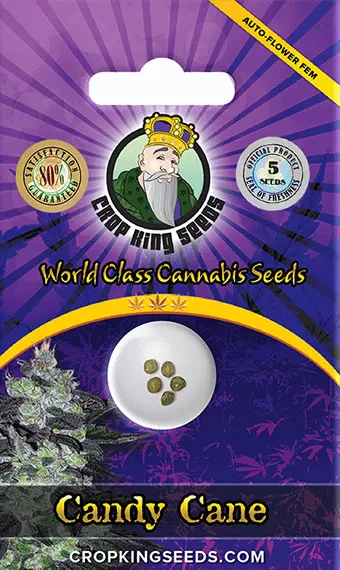The ongoing cannabis revolution has put Mary Jane under the microscope in a way that she never has been before. With cannabis more commonplace and accepted than ever, enthusiasts around the country are taking the chance to grow marijuana from the comforts of home.
Thanks to advancements in technology and in the cannabis industry itself, it has never been easier to set up and grow cannabis in your hydroponic gardening system. If that sentence sounds out of this world to you, then you likely need a quick primer on what that means.
Let’s dive into the world of convenient cannabis cultivation by discussing the art of hydroponics, the benefits of autoflowering cannabis strains, and how you can blend the two comfortably at home.
Hydroponics 101: Understand the Art of Soilless Growing
There are a variety of ways to approach the cultivation of cannabis from the comfort of your home. Today, we are going to be placing our focus on autoflowering cannabis strains and how well they thrive within soilless growing environments, aka hydroponics.
Hydroponic gardening refers to the art of cultivating your plants without any soil medium. This means that you could end up growing your plants on a soilless substrate like coco coir or even through a substrate-free medium like an aeroponic system.
Many technical tricks must be employed to find success in this type of system, but that doesn’t mean it can’t be done by anyone with an affinity for gardening.
What Are PH and PPM?
Before attempting to grow in a hydroponic system, growers must understand a few core measurements as they are essential to the health and vitality of their crops. The PH and PPM levels of your feeding solutions must be measured every single day.
A pH meter will tell you how alkaline or acidic your feeding solution is. Make sure that your pH balance is hovering between 5.5 and 5.8, adjusting as needed to ensure the proper absorption of nutrients.
An EC Meter will tell you how many particles per million are present in your feeding solutions. The PPM level is imperative to ensuring that you are feeding your plant enough of the nutrition that it craves.
Ideal PPM levels include
- Seedlings: 100 – 250 PPM
- Vegging: 300 – 400 PPM
- Pre-Flower: 450 – 700 PPM
- Flowering: 750 – 850 PPM
- End of Flowering: 1000 – 1600 PPM
- Harvest: 0 PPM.
What Are Autoflowering Cannabis Strains?
Autoflowering cannabis seeds have been made to produce plants that flower automatically after just two to four weeks of growth. The benefit of autoflowering cannabis seeds, especially for at-home cultivation, is simple: there is no light schedule switch necessary to induce flowering.
An autoflower cannabis strain can provide plenty of benefits for commercial and at-home growers alike.
- Require less growing time.
- Ready to harvest within 10 weeks.
- Autoflowering seeds are feminized – no male plants.
- Plants maintain a small size.
Growing Autoflowering Cannabis Hydroponically
Working with autoflowering cannabis strains can be a great way to expedite your entire growing process. When combined with a properly established hydroponic system, growers will find that they experience many direct benefits to themselves, their plants, and their overall budget.
Let’s highlight a few key benefits that hydroponic gardening can provide.
- Maximize Space / Resources – The best reason to explore hydroponic gardening and autoflower gardening systems is that you can maximize all of your resources. Through HPS, Metal Halide, or LED lighting, you can provide your plant with the full spectrum that it needs to thrive. At the same time, you can optimize your nutrition schedule to keep your plants healthy throughout the calendar.
- Cultivate and Harvest Year Round – Growing indoors through hydroponics allows you to plant your seeds at any time. Whether in the heart of winter or the beginnings of spring, you’ll find your indoor autoflowering hydroponic systems have you prepared for success.
- Produce Larger Yields – When you grow in a hydroponic system, you can enjoy larger yields. This is traditionally because you can optimize your resources by controlling exactly what your plant has access to. By providing your autoflowering cannabis with just the nutrients it needs, you’ll get a convenient, expedited, and healthy outcome.
Most Popular Hydroponic Systems
Soilless growing is approachable through several different systems. While this list is not exhaustive, it does cover some of the most prominent hydroponic systems for marijuana-growing enthusiasts. Each system will have its unique perks and benefits to be aware of.
Ebb & Flow
The most simple and accessible hydroponic system is known as Ebb and Flow. This system requires a water pump, a reservoir, a growing table, and whatever soilless medium you are interested in (coco fiber, clay pebbles, perlite).
Ebb and Flow systems flood your plants with water on a schedule, allowing nutrients to get delivered directly to the plant’s roots. This system requires growers to pay close attention to the nutrition and pH balance of their reservoir.
Pros: Easy to build, Low in cost, Abundant Nutrition.
Cons: Unstable PPM/PH, Potential Nutrient Deficiencies.
Deep Water Culture
A Deep Water Culture (DWC) set-up requires a soilless substrate, such as clay pebbles, for your plant to cling to. Your plant is placed in a special pot which is then submerged in the reservoir with your nutrition solution. An air bubbler within the reservoir keeps the water oxygenated, thus preventing any potential disease or root rot.
Pros: No maintenance, Fast growth, not much equipment.
Cons: Pump failure could kill your plants, and Unstable PH/PPM.
Nutrient Film Technique
This advanced hydroponic system utilizes a thin outpouring of water along the bottom of the root system to continuously feed your plants. Known as the Nutrient Film Technique, this system keeps just the tips of the roots soaked in the solution.
Pros: Easy to monitor, Low water consumption, Prevent toxic build-up.
Cons: Potential root problems, Water temperature is hard to regulate, Requires Daily Checkups.
Aeroponics
Similar to the Deep Water Culture system described above, Aeroponics revolves around a reservoir, an air pump, and a precise nutritional feeding schedule. In this system, the roots of your plant are suspended in the air as small sprinklers direct nutrient-infused mist onto the roots every couple of minutes.
Pros: Maximize Nutrition, Easy to Handle Plants, Healthier Outcomes.
Cons: Complicated, High Up Front Cost, Requires Constant Attention


















